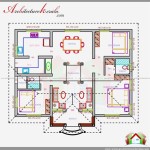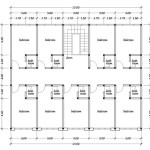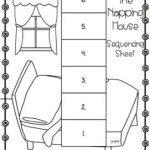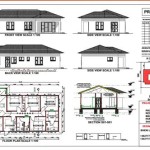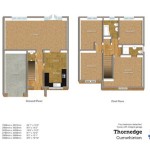Planning Permission To Build Another House In Garden
Building a new house in a garden, often referred to as ‘garden grabbing’ or infill development, is a popular option for homeowners seeking to maximize the value of their property or create independent living spaces for family members. However, it's a complex undertaking governed by stringent planning regulations. Success hinges on understanding and navigating these regulations effectively. Planning permission is almost always required for such developments, and obtaining it can be a challenging process. This article details the critical aspects of securing planning permission for building a new house in a garden.
The fundamental principle guiding planning decisions is the local planning authority's (LPA) development plan. This document, typically comprising a local plan and any neighborhood plans, sets out the policies and strategies for development within the area. Planners will assess an application against the policies contained within this plan. Therefore, the first step in determining the feasibility of building in a garden is a thorough review of the relevant development plan policies.
Policies within the development plan will address various concerns, including density of development, character of the area, impact on neighboring amenity, access and parking, and environmental considerations. Many local authorities have specific policies relating to garden development, which may seek to resist such proposals if they are deemed to be detrimental to the character and amenity of the surrounding area. Development plan policies are not the only consideration however. The National Planning Policy Framework (NPPF) sets out the government's planning policies for England and must be taken into account by LPAs when determining planning applications. The NPPF promotes sustainable development and encourages efficient use of land. It also places weight on good design and protecting the character and amenity of residential areas.
Understanding the Policy Context
The policy context is crucial for understanding the likelihood of obtaining planning permission. Local planning authorities will have specific policies related to infill development, garden grabbing, and the overall density and character of the area. These policies are crucial to review. Often, they will outline specific criteria that must be met for such developments to be considered favorably. These criteria might include minimum garden sizes, the scale and design of the proposed dwelling, and the impact on neighbouring properties.
For example, a policy might state that garden development will only be permitted if the resulting dwelling complements the architectural style of the existing properties, does not significantly reduce the remaining garden space of the original house, and does not adversely affect the privacy or light of neighbouring residents. The specific wording of the policies is critically important. A careful reading will reveal the specific requirements and potential obstacles that need to be addressed in the planning application. If a policy is particularly restrictive, it may be necessary to adjust the design or scale of the proposed development to align with the policy requirements.
Furthermore, understanding the history of planning decisions in the area is beneficial. Reviewing previously approved or refused planning applications for similar developments can provide valuable insights into the LPA's attitude towards garden development and the types of concerns that are likely to be raised. This data can be accessed through the LPA's online planning portal.
In addition to the development plan, supplementary planning documents (SPDs) may provide further guidance on specific issues, such as design principles or parking standards. These documents are not part of the development plan but are considered material considerations in the decision-making process. Familiarity with these documents can help to refine the proposal and ensure that it aligns with the LPA's expectations.
Pre-application advice from the LPA is a valuable resource for understanding the policy context and obtaining informal feedback on the proposed development. This service typically involves submitting a preliminary plan to the LPA and receiving written advice from a planning officer regarding the proposal's compliance with planning policies. While pre-application advice is not binding, it can provide valuable insights and identify potential issues that need to be addressed before submitting a formal planning application.
Addressing Design and Amenity Considerations
Design and its impact on amenity are key considerations in the planning process. The design of the proposed dwelling must be of a high standard and should respect the character and appearance of the surrounding area. The LPA will assess the proposal in terms of its scale, massing, height, materials, and architectural style. A well-designed dwelling that complements its surroundings is more likely to receive planning permission than one that appears incongruous or out of place.
The impact on the amenity of neighbouring properties is another crucial factor. The LPA will be concerned about potential issues such as loss of light, loss of privacy, overlooking, and increased noise. These issues can be addressed through careful design and layout of the proposed dwelling. For example, setting the dwelling back from the boundary, using high-level windows, or incorporating screening can help to mitigate the impact on neighbouring properties.
Furthermore, the LPA may be concerned about the impact on the existing garden. A significant reduction in the garden area of the original house may be considered unacceptable, particularly if the remaining garden space is deemed to be inadequate for the needs of the occupants. The proposal should demonstrate that the remaining garden space is of a reasonable size and that it provides adequate amenity space for both the original house and the new dwelling.
Sustainability is also an increasingly important consideration. The LPA may require the proposal to incorporate sustainable design features, such as renewable energy technologies, energy-efficient materials, and water conservation measures. Demonstrating a commitment to sustainability can enhance the likelihood of obtaining planning permission.
Access and parking arrangements are also important considerations. The LPA will need to be satisfied that the proposed dwelling can be accessed safely and conveniently and that adequate parking is provided for the occupants. The proposal should demonstrate that the existing access road is capable of accommodating the increased traffic generated by the new dwelling and that sufficient off-street parking spaces are provided.
Overall, the design and amenity considerations must be carefully addressed in the planning application. A well-designed dwelling that respects its surroundings, minimizes its impact on neighbouring properties, and incorporates sustainable design features is more likely to be approved.
The Planning Application Process
The planning application process typically involves several stages. The first step is to prepare a detailed planning application, which includes architectural drawings, a site plan, a design and access statement, and other supporting documents. The design and access statement should explain the design rationale behind the proposal and demonstrate how it addresses the relevant planning policies and design considerations. The application must be submitted to the LPA, along with the appropriate application fee.
Once the application has been submitted, the LPA will validate it to ensure that all the required information has been provided. The LPA will then consult with relevant stakeholders, such as neighbours, statutory consultees (e.g., the Environment Agency, the Highways Authority), and other interested parties. Neighbours will typically be notified of the application and invited to submit comments. The LPA will take these comments into account when making its decision.
The LPA will then assess the application against the relevant planning policies and design considerations. This process may involve site visits, discussions with the applicant, and further consultations with stakeholders. The LPA will aim to make a decision on the application within a specified timeframe, typically eight weeks for minor applications and thirteen weeks for major applications. However, complex applications may take longer to determine.
If the LPA is minded to approve the application, it may impose conditions to mitigate any potential adverse impacts. These conditions might relate to matters such as landscaping, drainage, or the hours of construction. It is important to carefully review the proposed conditions to ensure that they are reasonable and achievable.
If the LPA refuses the application, the applicant has the right to appeal to the Planning Inspectorate. The Planning Inspectorate is an independent body that hears appeals against planning decisions. The appeal process typically involves submitting written evidence and attending a hearing or inquiry. The Planning Inspectorate will then make a decision on the appeal, which is binding on the LPA.
Navigating the planning application process can be complex and time-consuming. It is often advisable to seek professional advice from a planning consultant or architect. These professionals can provide expert guidance on the planning policies and design considerations and can help to prepare a strong planning application that maximizes the chances of obtaining planning permission. They can also assist with the negotiation process with the LPA and represent the applicant at appeal, if necessary.
Securing planning permission to build another house in a garden requires careful planning, a thorough understanding of the relevant planning policies, and a design that respects the character and amenity of the surrounding area. By addressing these key considerations, homeowners can increase their chances of obtaining planning permission and realizing their development aspirations.

Backland Development Planning Permission For Building In Your Garden Urbanist Architecture Small Company London

Backland Development Planning Permission For Building In Your Garden Urbanist Architecture Small Company London

Garden Room Building Regulations And Planning Permission

Do I Need Planning Permission For Outbuildings Drawing And Consultants Architects In London

Do You Need Planning Permission For A Garden Office

Do You Need Planning Permission For A Summer Home Or Garden Room Surrey Hills Buildings

Backland Development Planning Permission For Building In Your Garden Urbanist Architecture Small Company London

Garden Room Permitted Development The Guide

Don T Your Large Garden To A Developer Self Build New Home My Extension

Do You Need Planning Permission For An Extension

